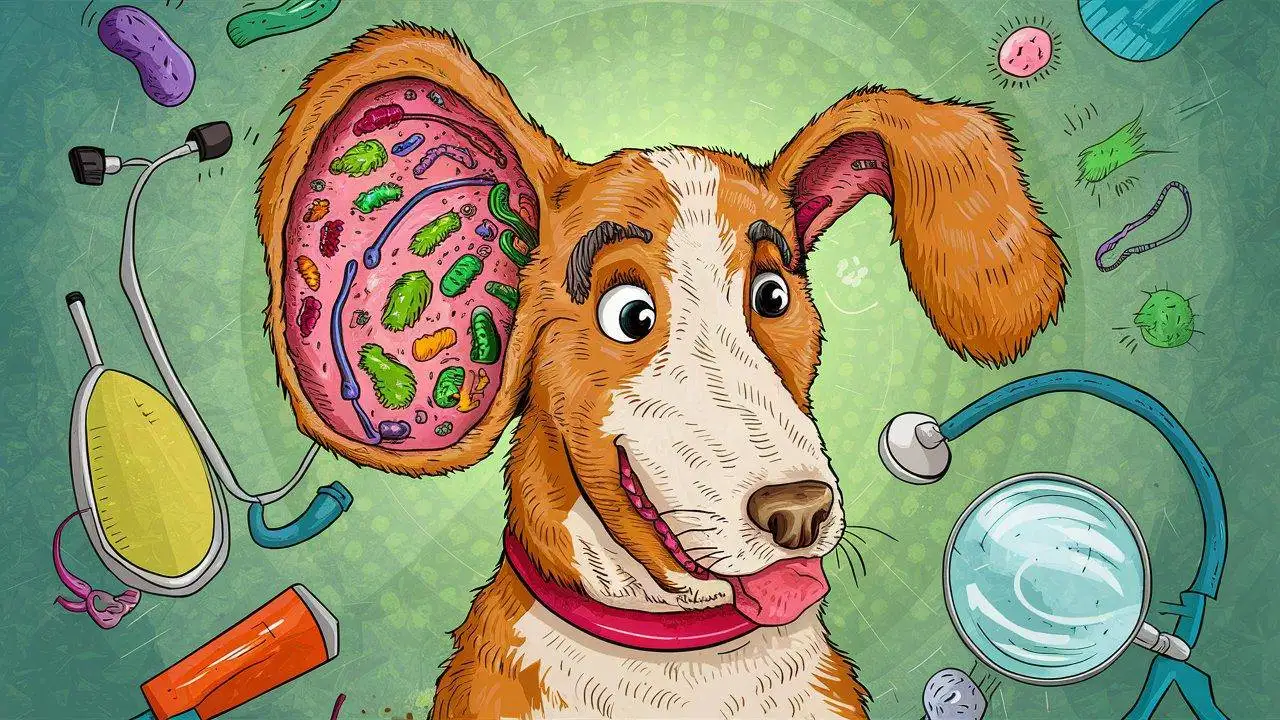Those adorable floppy ears that make our canine companions so darn cute can sometimes become a breeding ground for trouble. Yep, we’re talking ear infections! These itchy, uncomfortable nuisances can put a damper on your pup’s playful spirit. So, how do we spot the signs of an ear infection and help our furry friend find relief? Let’s become doggy detectives and sniff out the symptoms of this common canine woe!
The Telltale Tics: Signs Your Pup’s Ears Are in Distress
Ear infections are a drag for dogs, and they often show it through some pretty clear signs. Here’s what to watch out for:
- The Head Shake Hustle: Is your pup shaking their head like a furry maraca? Constant head shaking is a classic sign of an ear infection, especially if it’s accompanied by a tilt of the head to one side. They might even rub their head on furniture in an attempt to soothe the itch.
- The Scratch Attack: Excessive scratching or pawing at the ears is another big clue. An ear infection can be incredibly itchy, and your pup might be desperate for some relief.
- The Funky Fragrance: A nasty odor emanating from your dog’s ears is a red flag. Healthy ears shouldn’t have a strong smell.
- The Red and Raw Report: Take a peek inside your pup’s ears! Redness, swelling, or inflammation of the ear canal could indicate an infection.
- The Discharge Debacle: Does your dog’s ear seem to be leaking something nasty? Discharge, whether pus, blood, or a yellowy gunk, can be a sign of infection.
- The Hearing Hiccup: In severe cases, an ear infection can even affect your dog’s hearing. If you notice them struggling to hear commands or seeming startled by sudden noises, a vet visit is crucial.
Beyond the Itch: Potential Culprits Behind Ear Infections
While ear infections are often caused by bacteria or yeast overgrowth, other factors can also play a role:
- Allergies: Environmental allergies like pollen or dust mites can trigger inflammation in the ears, leading to infection. Food allergies can also contribute.
- Water Woes: Moisture trapped in the ear canal after swimming or bathing can create a breeding ground for bacteria and yeast.
- Foreign Invaders: Foxtails, grass seeds, or other foreign objects lodged in the ear canal can irritate the delicate skin and lead to infection.
- Underlying Conditions: Certain medical conditions, like hypothyroidism or autoimmune disorders, can make dogs more susceptible to ear infections.
Uh Oh! What to Do if You Suspect an Ear Infection
If you notice any of these signs in your dog, don’t delay! Here’s what to do:
- Ditch the DIY Drama: Resist the urge to clean your dog’s ears with random solutions or cotton swabs. These can actually worsen the infection.
- Vet Visit ASAP: Schedule an appointment with your veterinarian. They can diagnose the cause of the infection and prescribe the appropriate treatment.
- Gentle Handling: While you wait for the vet visit, avoid any further irritation. Don’t let your pup scratch excessively, and handle those floppy ears with care.
Treatment Time: Banishing the Bacteria and Restoring Relief
Your veterinarian will likely recommend a course of antibiotics or antifungal medication, depending on the cause of the infection. Ear cleaning solutions and medicated drops might also be part of the treatment plan.
Preventing the Floppy Follicle Fiasco: Keeping Those Ears Healthy
Here are some tips to keep your pup’s ears healthy and prevent future infections:
- Regular Ear Cleaning: Regular cleaning with a vet-approved solution can help remove debris and prevent buildup. But remember, don’t overdo it!
- Dry Those Droopy Ears: After swimming or bathing, thoroughly dry your dog’s ears with a soft cloth. Moisture is the enemy!
- Manage Allergies: If allergies are suspected, work with your vet to identify the allergens and implement a management plan.
- Regular Vet Checkups: Routine vet checkups allow for early detection of any ear problems.
Remember: A healthy dog is a happy dog, and that includes healthy ears! By keeping a watchful eye for signs of infection, seeking prompt veterinary care, and implementing preventive measures, you can ensure your furry friend enjoys those adorable floppy ears for years to come. So, cuddle close, give those ears a gentle scratch (with their permission, of course!), and keep your pup’s hearing happy and healthy!



